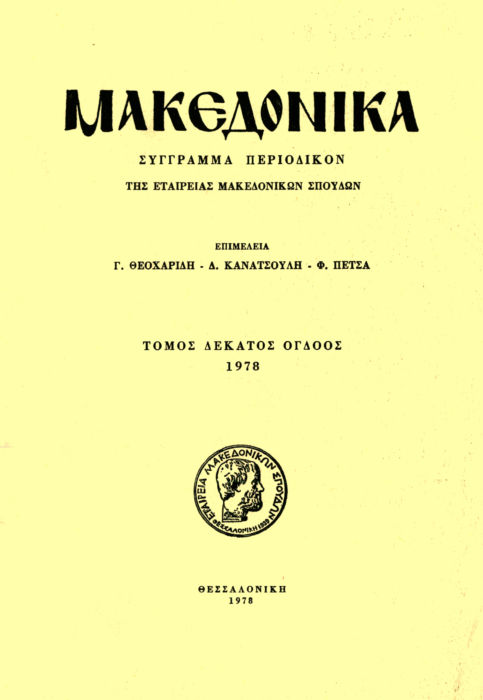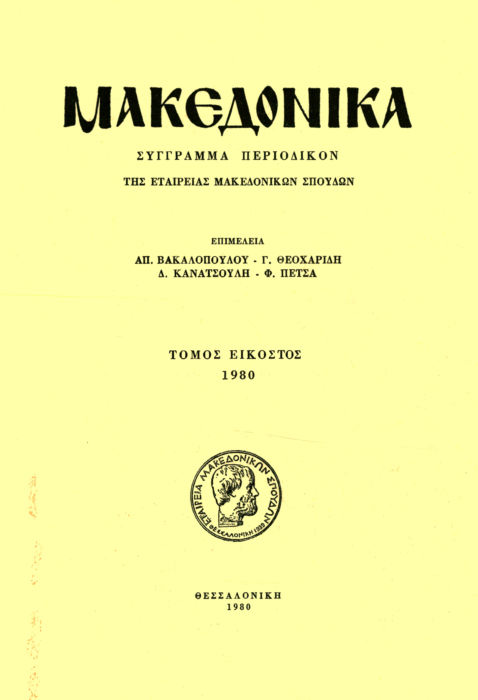The cadastre and library of the convent of St. Dionysios in Mt. Olympos: Manuscripts and ancient liturgical books of Pieria
Abstract
In this article are published:
a) The cadastre of the convent of St Dionysios, drawn up in 1905. This cadastre shows that the convent pocessed cultivable land of 109,5 ha in the villages of Litochoron, Korinos, Katerini, Tsiornovo, Keramidi and Pyrgotos of Thessaly, Pieria and Emathia.
b) The catalogue of philological and religious books of the convent’s library which contained 120 volumes. This catalogue was drawn up in 1913. Only fourteen volumes have been saved from the convent’s destruction by the Germans in 1943.
e) The manuscripts found in the region of the actual Pieria.
d) A catalogue of 41 religious books from 1522 to 1795, to be found in the churches of Pieria’s villages. Five publications of these have not been previously listed in the Greek Bibliography.
Article Details
- How to Cite
-
Παπαζώτος Θ. (1987). The cadastre and library of the convent of St. Dionysios in Mt. Olympos: Manuscripts and ancient liturgical books of Pieria. Makedonika, 26, 16–50. https://doi.org/10.12681/makedonika.1073
- Section
- Articles

This work is licensed under a Creative Commons Attribution-NonCommercial-ShareAlike 4.0 International License.
Authors who publish with this journal agree to the following terms:
- Authors retain copyright and grant the journal right of first publication with the work simultaneously licensed under a Creative Commons Attribution Non-Commercial License that allows others to share the work with an acknowledgement of the work's authorship and initial publication in this journal.
- Authors are able to enter into separate, additional contractual arrangements for the non-exclusive distribution of the journal's published version of the work (e.g. post it to an institutional repository or publish it in a book), with an acknowledgement of its initial publication in this journal.
- Authors are permitted and encouraged to post their work online (preferably in institutional repositories or on their website) prior to and during the submission process, as it can lead to productive exchanges, as well as earlier and greater citation of published work (See The Effect of Open Access).










